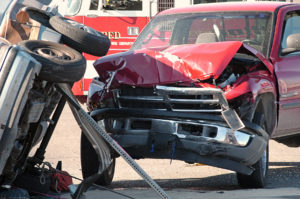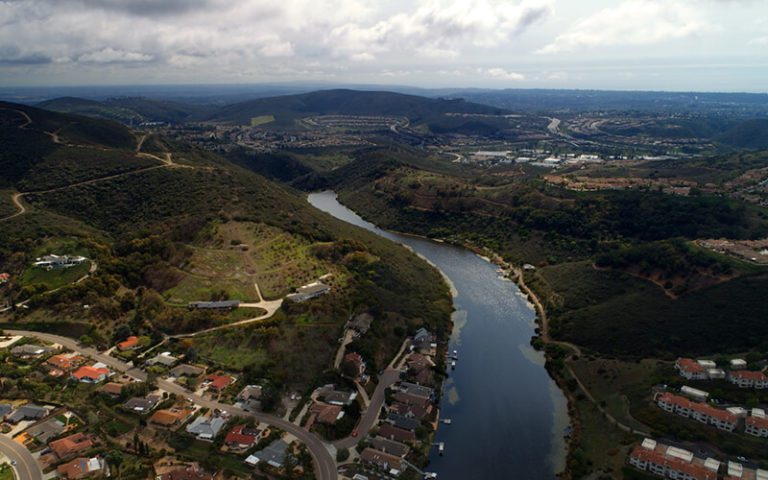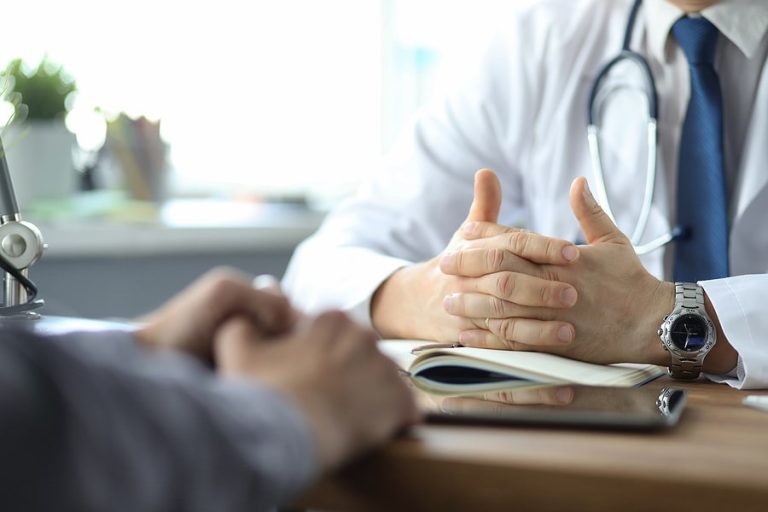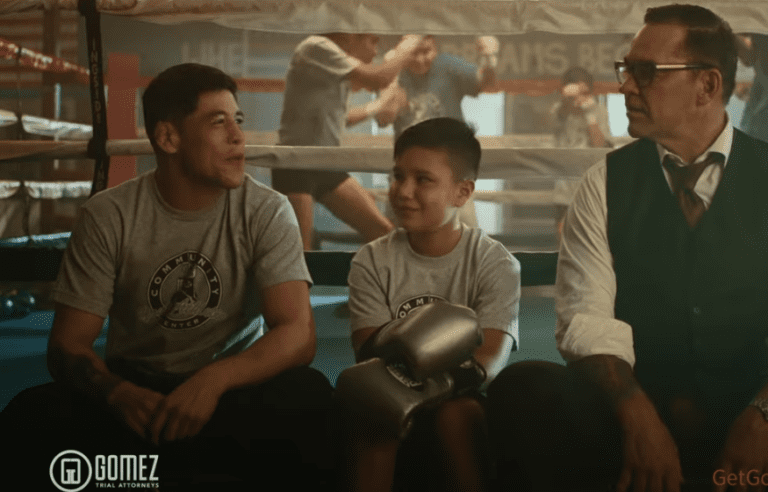 About T-Bone Accidents
About T-Bone Accidents
T-bone accidents get their name from the position of the vehicles when they collide. The nose of one vehicle hits the side of another vehicle. The wreck could occur at high speeds or low speeds, depending on the circumstances of the wreck. Usually, these accidents happen when someone does not stop at a traffic control signal or when someone exits a parking lot. Sometimes, a car backing out of a parking spot could back into the side of a vehicle passing the parking space.
Even at low speeds, a T-bone collision can cause severe injuries because of the position of the vehicles. If the corner of the bumper hits the door of the other vehicle, it could push the door into the driver or passenger sitting by that door. Even if the door consists of fiberglass, it also contains metal pieces for the window regulator and the lock mechanisms that could injure you if the vehicle forces the metal through the door panel. Additionally, window glass could break and cause cuts, which could become infected and lead to other complications.
Who Bears Liability for a T-Bone Collision?
T-bone crashes, also known as side-impact crashes or angular crashes, often involve complicated issues of fault. The driver who hits a vehicle with the nose or rear of their car doesn’t necessarily always bear liability for the accident—although, in most cases, that driver does bear liability. Others, however, could also share responsibility for the wreck. Depending on the speed and the position of the vehicle that hits you, you might suffer minor or severe injuries.
Someone driving too fast for conditions, driving under the influence, failing to yield the right of way, driving while distracted, or failing to obey traffic control signals can all cause T-bone wrecks. Out of the 50,930 drivers in fatal T-bone wrecks, 8,746 drove too fast for conditions, 5,164 drove under the influence, 3,728 did not yield the right of way, 3,008 people drove while distracted, and 2,054 failed to obey a traffic control signal.
Passengers in head-on collisions face less risk of injuries because of the protection provided by airbags and seatbelts. However, those in the vehicle hit from the side face a higher risk of suffering severe or catastrophic injuries. While some vehicles have side impact airbags, not all do. Many have crumple zones in the sides of the vehicles, but if the vehicle that hits you from the side doesn’t hit a crumple zone, the crash will likely push you to the other side of the vehicle.
Common Injuries Sustained in T-Bone Accidents
Because of the nature of T-bone accidents, injuries can range from minor cuts and scrapes to severe and catastrophic injuries lasting a lifetime. A person hit in a side impact wreck could even die in the accident. Serious injuries, such as traumatic brain injuries, internal injuries, back and spinal cord injuries, face and eye injuries, and head, neck, and shoulder injuries, could all result from a T-bone wreck.
Additionally, if drivers and passengers fail to wear a seatbelt, they face an increased risk of suffering severe or catastrophic injuries and even death. Other injuries can include road rash if the impact throws a person from the vehicle, crushed bones, simple and compound fractures, and thermal and chemical burns from gas and/or fire.
Damages Suffered in a T-Bone Accident
Even if you have good health insurance, your medical bills could exceed the limits of your policy, especially if you suffer from long-term disabilities caused by accident injuries. Furthermore, health insurance does not usually pay for lost wages and other damages that you suffer in a T-bone accident.
You can collect two types of damages in California: compensatory damages and punitive damages. Courts order compensatory damages in an attempt to make the victim whole again. While the money does not erase your injuries, nor does it bring back a loved one who died in a collision, it does significantly reduce the financial stress that may result from a T-bone crash. You can recover two types of compensatory damages: economic damages and non-economic damages.
The court only orders punitive damages, meant to punish the at-fault driver, if you can show that the at-fault driver acted intentionally or with gross negligence. Gross negligence involves actions that extend beyond regular negligence. For example, if someone broadsides you after rolling through a stop sign, the court would most likely classify that as negligent behavior, but not gross negligence. However, if the driver speeds through the intersection while intoxicated and does not bother to stop or even slow down, the court might consider that gross negligence.
Courts order punitive damages as a punishment for the defendant in an attempt to keep the at-fault driver and others from participating in similar behavior.
Economic Damages
Special damages, or economic damages, have a set monetary value and include:
- Past and future medical expenses. Medical expenses include surgeries, follow-up appointments, appointments with medical professionals, physical therapy, occupational therapy, and cognitive and other psychological therapies. Past medical expenses constitute those incurred because of the accident and before a settlement or a trial award. Future expenses constitute those incurred because of the accident and after a settlement or a trial award.
- Lost wages. If you cannot work from the accident through when you settle or obtain a trial award, you can collect lost wages.
- Lost earning capacity. If your T-bone accident injuries cause long-term or permanent disabilities that prevent you from working, you can collect compensation for the future earning capacity you lose. Even if you can still work part-time, but cannot work at the full earning capacity you did before the accident, you can collect the difference in your earning capacity.
- Replacement or repair of destroyed or damaged personal property.
- Funeral, burial, and/or cremation expenses. You may also qualify to recover probate costs, including probate attorneys’ fees and costs for filing the probate action.
Non-Economic Damages
General damages, or non-economic damages, do not have a set monetary value and include:
- Pain and suffering, including emotional distress.
- Loss of quality of life if your life significantly changes because of the accident. Changes might include taking prescriptions for the rest of your life or having to use ambulatory aids.
- Loss of consortium if you can no longer have a physical relationship with your spouse.
- Inconvenience if you have to hire someone to do the chores you usually do, including but not limited to lawn maintenance, home repair and maintenance, grocery shopping, and house cleaning.
- Excessive scarring and/or disfigurement.
Collecting Damages After a T-Bone Accident
You may be able to collect damages after a T-bone accident by settling with the insurance company or litigating against the insurance company and/or the at-fault driver. Because a T-bone accident can result from the actions of either driver, you should never discuss the accident with the insurance company. Instead, let your attorney handle those discussions.
Since California is a tort state, you will likely collect damages from the at-fault driver’s insurance company following a T-bone accident. Your insurance company might cover medical expenses and some lost wages, but when you get your settlement or trial award, you will have to reimburse your insurance company. In a tort state, the at-fault driver’s insurance covers damages.
After an accident, you can notify the insurance company, or better yet, ask your car accident lawyer to do so. If you choose to contact the insurance company, only give your name, the date and location of the wreck, and your attorney’s contact information. You can advise the insurance company that your attorney will call to file the claim on your behalf.
The insurance company might press you to discuss the wreck. Continue referring insurance representatives to your car accident attorney. Insurance companies do not like paying out claims as it affects their bottom lines; thus, representatives may twist what you tell them and use other tricks in an attempt to deny your claim or offer you a settlement that doesn’t reflect the true value of your case.
Experienced car accident attorneys know the tricks insurance companies use, so the insurance company likely won’t succeed in tricking you if you hire quality legal representation. Insurance companies also know that if you retain an attorney that you will likely move to litigation if they do not offer a reasonable settlement.
If you choose to litigate your case because you do not believe the insurance company offered you a fair amount, and you win, the insurance company must pay their attorneys and your attorneys on top of the damages the court orders. This amount would likely exceed a fair settlement; thus, insurance companies often reinitiate settlement negotiations after you file a lawsuit.
Legal Liability for a T-Bone Accident
Other parties beyond just the driver who hit you might share in the liability for your T-bone wreck. In some cases, you might recover damages from more than one person.
Others could share in the responsibility for the T-bone accident, even if they weren’t directly involved in the accident. A doctor who prescribes a drug and does not tell the driver not to drive, the bartender who served a drunk driver her last drink even though the bartender should have cut the customer off, or even a commercial driver with an unsafe record—one that his employer knew about—can all share legal liability for a T-bone accident.
States, cities, and counties bear responsibility for the roads in their jurisdiction. If one of these entities fails to maintain its roads, it might share responsibility for your injuries. Brush blocking an intersection, a pothole, or even a pile of sand left in the road could all cause someone to lose control of a vehicle as it approaches an intersection.
Additionally, if a road engineer or designer created a poorly designed road, the engineer could share responsibility for covering your damages, especially when traffic control signals prove difficult to see because of the intersection’s design.
Vehicle manufacturers and automotive parts manufacturers could share in the liability for an accident. For example, if you tap the brakes to stop at a stop sign, but nothing happened, or if while traveling through an intersection your vehicle just quits, a manufacturer could share the liability for damages if it knew or should have known of the defective part.
If a commercial vehicle T-boned you, you could also collect from additional parties, including:
- The trucking company.
- The truck and/or trailer manufacturer.
- The automotive repair shop that replaced parts, like brakes or struts.
- A trucking company that pressured a driver to get the load delivered by an unrealistic time. The dispatcher might work for the trucking company—in which case, you’d sue the trucking company. If the trucking company uses a third-party dispatcher, you could sue the dispatch company.
- Inspectors that do not notice blatantly visible malfunctions.
- A truck owner/operator.
- A person or company that leases a truck to a driver.
You generally have two years to file a lawsuit against the at-fault driver in San Diego, but that two years goes by fast when you have to investigate the wreck and want to attempt a settlement. If you suffered injuries in a T-bone collision, contact a car accident lawyer for a free case evaluation.







